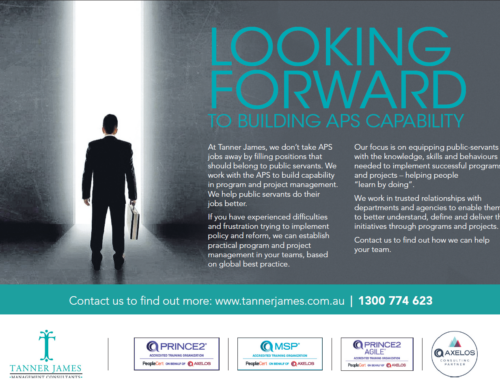Your organisation wants to get better at project management. So you send all your project managers on training courses to get project management qualifications. Unfortunately this will not deliver the results you are seeking. This blog explains why, and what you can do about it.
Training individuals does not achieve organisational implementation
Projects are about the delivery of change across organisational boundaries. Effective governance of projects requires decision making structures – Steering Committees, Projects Boards etc – that cut across those boundaries. Everyone who plays a role in these structures must be on the same page, not only about what the project is doing, but how the project is being managed. Indeed, if they do not understand how the project is being managed this is likely to limit their ability to effectively contribute in terms of what the project is doing.
It follows that the most effective way to train is to do so on a project-by-project basis, not a person by person basis, so that everyone in a project management role learns in the same context as their colleagues.
Each project that learns together must then be provided with appropriate support to ensure what they have learned can be translated from the learning environment – classroom or online – into the workplace.
Senior executives must be directly and personally involved in the learning
In the training context the message is simple – that senior executives who are involved in the governance of projects must be directly and personally involved in the learning.
That is not to say however that you should attempt to put your executives through the same training regime as the project managers. It is highly likely that they will have neither the time nor the inclination to spend several days on a course or hours wading through screen after screen of e-learning.
What most executives want to understand is how does the project management approach relate to the context in which they operate, what is their role in a project, and what do they need to do to ensure effective project management among the people who work for them.
Tailoring is essential
Project management qualifications demonstrate (in most cases) that an individual has attained a certain level of understanding of a particular approach. What they do not do is equip that individual with an understanding of how the approach should be applied to their particular project.
Project management training is most effective when participants receive not only theoretical knowledge, but specific guidance on how things work in their organisation and the opportunity to apply the theory to their own projects. This means tailoring must be tailored to suit both the organisation and the types of projects it is running.
For Government agencies that are required to undertake P3M3® assessments and improve capability, it is important to know that P3M3® level 3 maturity requires that training is focussed on your organisation (blog P3M3 Training Considerations).
Embedding project management disciplines requires a structured approach to manage the change
Putting these things together at an organisational level is not trivial. It requires good cooperation between the corporate PMO and HR department responsible for training / people development.
It requires careful consideration of timings – what is the right time to provide training to each project from the perspective of that project, and how does that add up into an overall picture of how the whole portfolio of projects can be supported. If the organisation is running projects in a programme context this must also be taken into consideration.
Putting it together
If you are currently just arranging project management training for individuals, I suggest you:
- consider changing your training to a project-by-project basis,
- involving senior executives in the learning; and
- tailoring that training.
How to put all this together? I think you already know the answer to this – run it as a project!






Leave A Comment